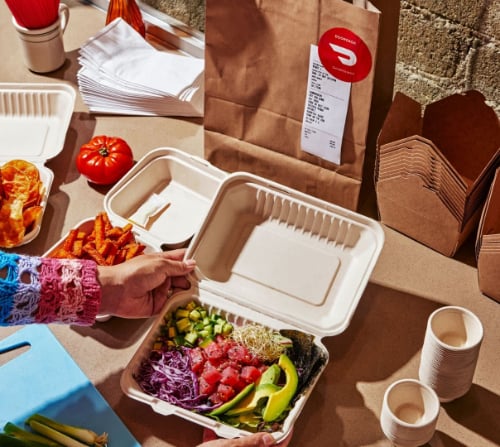Click to Get Big Benefits
-
Meal Packaging

-
Fresh Produce Packaging

-
Healthy Food Packaging

-
Toast Packaging

-
Food And Beverage Packaging

-
Waffle Packaging


The New Rules of Food Packaging
Regulatory bodies, including the FDA, have introduced stricter guidelines for food and beverage packaging, requiring clearer allergen labeling and more sustainable materials. Many states are also implementing bans on single-use plastics, pushing companies to adopt eco-friendly fresh produce packaging.
For brands using toast packaging or waffle packaging, these regulations mean balancing shelf appeal with compliance. Consumers now spend an average of 7-15 seconds examining product packaging before making a purchase decision—making meal packaging design more crucial than ever.
Breakfast Packaging Innovations
Breakfast foods require functional and attractive packaging to maintain freshness and convenience. The latest toast packaging solutions include:
Resealable pouches with built-in freshness indicators, ideal for artisanal breads.
Compostable waffle packaging that protects crisp texture while reducing waste.
Transparent windows in healthy food packaging to showcase product quality and attract buyers.
For frozen breakfast products, waffle packaging is now being designed with microwave-safe steam vents, allowing consumers to heat waffles evenly without losing crispness.
Smart Meal Packaging Solutions
Today’s consumers prioritize convenience, making meal packaging innovations essential for food brands. Some of the biggest trends in food and beverage packaging include:
Divided containers for meal prep and portion control.
Microwave-to-table designs that eliminate the need for extra dishes.
QR codes on packaging, linking to reheating instructions or recipes for added engagement.
Many brands are also switching to plant-based plastics or recycled paperboard for their healthy food packaging, meeting sustainability expectations while maintaining product quality.
The Fresh Produce Packaging Revolution
Retailers are revamping fresh produce packaging to extend shelf life and reduce waste. The most effective solutions include:
Breathable mesh bags, which allow airflow and keep produce fresh longer.
Edible coatings that replace plastic wraps while preventing spoilage.
Compostable clamshells for berries and delicate produce, reducing plastic usage.
Farmers' markets and organic brands are also shifting to minimalist packaging, using simple paper bands or reusable containers to align with eco-conscious consumers.
The food and beverage packaging sector continues to push innovation, with trends like:
Aluminum water bottles, replacing single-use plastic bottles.
Plant-based caps and labels, reducing non-recyclable waste.
Self-chilling cans, ideal for outdoor enthusiasts and on-the-go consumers.
Recent studies show that brands investing in sustainable food and beverage packaging see 23% higher customer loyalty, highlighting the growing importance of eco-friendly packaging solutions.
Conclusion
From functional toast packaging to advanced fresh produce packaging, 2024 is shaping up to be a transformative year for the food and beverage packaging industry. Businesses that embrace smart meal packaging and sustainable waffle packaging will not only improve customer satisfaction but also stay compliant with evolving regulations.
Adapting to these healthy food packaging trends now will ensure your brand remains competitive in a rapidly changing market. Ready to enhance your packaging strategy? Explore innovative, eco-friendly packaging solutions to drive sales and consumer engagement!

All News
Others
- Terms of use Terms of use
- Contact Us Contact Us
- Privacy Policy Privacy Policy


